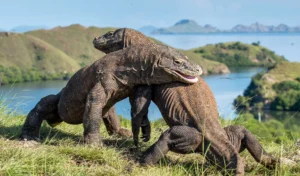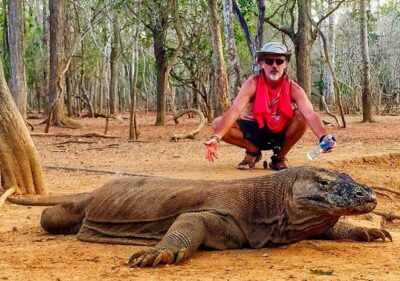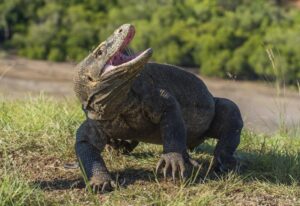Encountering a Komodo dragon in the wild can be a thrilling yet potentially perilous experience. As the largest living lizard species, these formidable creatures command respect and caution. Whether you’re an adventurer exploring their native habitats or simply curious about their behavior, understanding how to avoid komodo dragon with these apex predators is crucial for your safety.
Avoiding a Komodo dragon involves several key strategies to minimize the risk of encountering these formidable creatures. First and foremost, understanding their habitat preferences is crucial. Komodo dragons are native to the Indonesian islands of Komodo, Rinca, Flores, Gili Motang, and Padar, where they inhabit savannas, forests, and grasslands.
When exploring these regions, staying on designated trails and paths can help reduce the likelihood of stumbling upon a Komodo dragon unexpectedly.
Understanding Komodo Dragons

Understanding Komodo dragons requires delving into their biology, behavior, and ecological significance. Komodo dragons (Varanus komodoensis) are the world’s largest lizards, native to a few Indonesian islands, including Komodo, Rinca, Flores, and Gili Motang. Here’s a breakdown:
- Physical Characteristics: Komodo dragons can grow up to 10 feet (3 meters) in length and weigh over 150 pounds (70 kilograms). They have powerful jaws filled with serrated teeth, sharp claws, and a long, muscular tail. Their skin is covered in reinforced scales, offering protection from injury and aiding in thermoregulation.
- Habitat: Komodo dragons inhabit a range of ecosystems, including tropical forests, savannas, and grasslands. They are particularly fond of coastal regions and areas near water sources, where they can find prey and regulate their body temperature.
- Diet and Hunting: Komodo dragons are apex predators, primarily feeding on carrion but also hunting live prey, including deer, pigs, water buffalo, and smaller reptiles. They possess powerful senses of smell and can detect carrion from several miles away. Komodo dragons use ambush tactics to capture prey, relying on their strength, agility, and venomous bite to overpower larger animals.
- Venom: Komodo dragons have glands in their lower jaws that secrete venom containing toxins and bacteria. While initially thought to primarily induce prey incapacitation through infection, recent research suggests that their venom may have more direct toxic effects, contributing to prey immobilization and eventual death.
- Social Behavior: Komodo dragons are predominantly solitary animals, with males establishing territories that overlap with those of several females. They are also known to exhibit cannibalistic behavior, with larger individuals preying on smaller ones, including juveniles.
- Conservation Status: Komodo dragons are listed as vulnerable by the International Union for Conservation of Nature (IUCN) due to habitat loss, poaching, and human-wildlife conflict. Conservation efforts focus on habitat protection, anti-poaching measures, and promoting sustainable tourism to ensure the long-term survival of these iconic reptiles.
Understanding these aspects of Komodo dragons provides insight into their role in their ecosystems and the importance of conserving their habitats for future generations.


